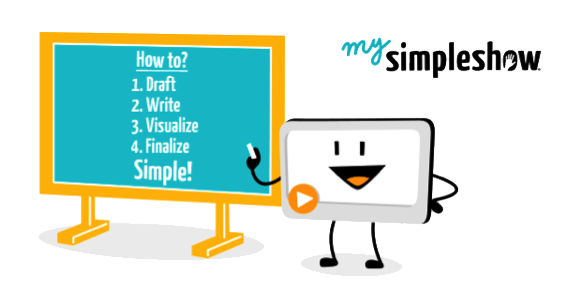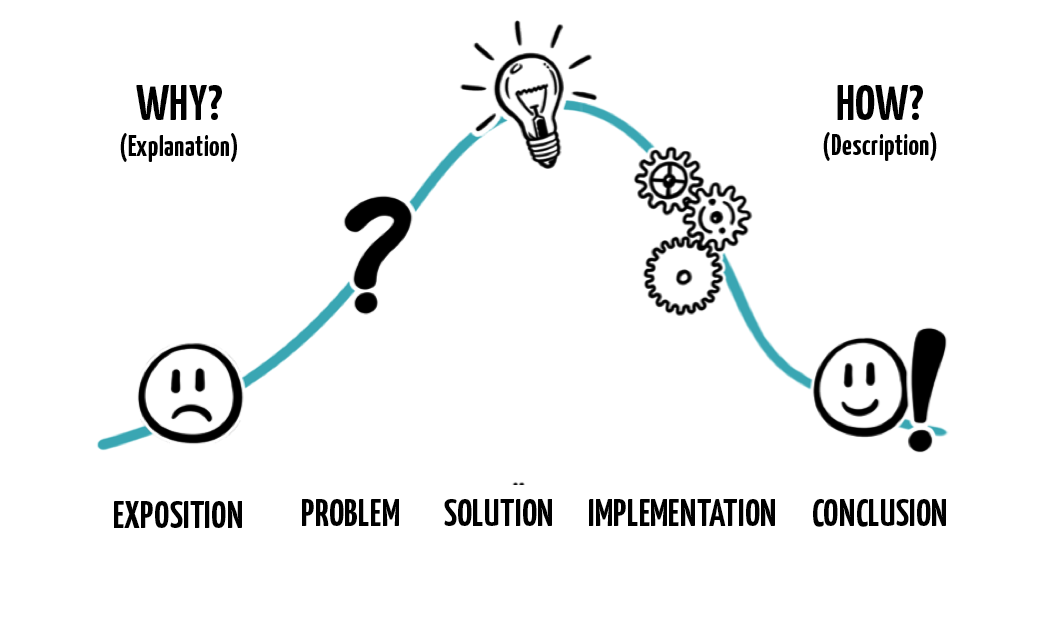
Our expert tips for a good script – Part 2

Storytelling—fact and fiction
Welcome to the second part of our “expert tips for a good script“.
People love stories, so that’s why we’ve created a story for our readers to relate the message of this particular section:
|
Once upon a time, there was a fact. The fact was very important, had plenty to say and would have been able to make many people’s lives a whole lot easier. But there was a problem! No one was interested in the poor fact. And as no one wanted to pay attention to the sad little fact, it remained unheard. At around this time, a beautiful, radiant story was asking itself all about the meaning of life. Of course it was entertaining and captivated its audience every time it appeared, arousing their empathy and enthusiasm, but afterward, people usually asked themselves what it left in its wake. A fairy observed this pair in their various struggles: The failure of the little, invisible fact and the beautiful but flimsy story’s feeling of insignificance. Then, the fairy decided to unite the two. The fact’s job was to bolster the story, and the story’s job was to lend the fact significance. No sooner said than done. And the results were amazing! With the story’s help, the fact was able to elicit people’s enthusiasm, arousing their feelings and thus becoming unforgettable. And, thanks to the fact’s support, the story gave its audience new insights and made it reflect. The two only found their respective callings once they were together. After being united, fact and story were so happy that they lived happily ever after and are inseparable to this day. |
Storytelling – structure

The “strength” of a story usually depends on its structure. Although explainer videos don’t have to be highly sophisticated dramatic works, structure is nonetheless a decisive element of your simpleshow.
When creating a script for an explainer video, we usually proceed from the “why” to the “how”. As an example, we go from answering the question “Why is corporate evolution necessary” to answering the question “How does corporate evolution unfold”.
In the process, we usually begin with the exposition, i.e., with the introduction of the character and its circumstances, subsequently highlighting the problem the character has and finally moving—usually very swiftly—toward the solution. After this, we show how the solution looks in detail or describe its implementation before finally coming to the conclusion, in which we refer back to the story’s initial situation and reveal the now improved circumstances—the happy end, if you like! If you wish to galvanize your audience, now’s the time to do so: Conclude your simpleshow with a call to action.

Using images
Not only do images support your message, they can also supplement it or take it in a completely new direction. It’s wise to think about which images you want to use in your explainer video when developing your script. Note down ideas and inspirations that occur to you spontaneously as you write.

Robert |
I recommend thinking “outside the box” as far as illustration is concerned. Is it preferable to illustrate a term or an idea in a symbolic or realistic way? Is a character-related gesture or perhaps highlighting an existing scribble more suited to this statement (e.g., twinkling stars)? If not enough is going on in the illustration, viewers are likely to grow bored and detach themselves from the message you are seeking to promote. If too much is going on, they find it difficult to create a link between content and illustration. Find a happy medium! By the way, this also applies to the length of the clip and the amount of content. |
As far as the key elements of your explainer video are concerned, work out suitable images to use in advance in order to be able to refer to these in the text or align the story to these as required. However, the actual work on these images comes after the script has been written, in the visualization phase of your simpleshow.

Nadja |
Be aware of the power of images. The visual level of the explainer video not only underscores the spoken text but also gives emphasis to the statement and anchors it in the viewer’s mind. In the process, the correct choice of scribble and a harmonious image build-up are decisive. During the visualization process, I ask myself the following questions:
Ultimately, the rule of thumb when it comes to illustration is: As easy as possible—as complex as necessary. |
Creating trust

You’ve already taken a key step in gaining your audience’s trust: By changing your perspective, you’ve become aware of your target group’s needs, concerns, fears and objectives. It follows that you should formulate your script in a way that incorporates these insights, by addressing fears and concerns and taking account of needs and objectives.
Also ensure that you phrase the sentences you use in your script in a way that is as positive as possible. Negativity will not only alienate your audience but is also hard to understand. By contrast, a positive undertone creates positive acceptance amongst your audience for the content you are presenting. And you will gain their trust.

David |
A script appeals more to readers when a central theme runs through it, guiding the audience. Ideally, each item of content within the script should result from the information which has preceded it. Words like “so”, “therefore”, “thus”, “because”, “as”, “so that”, “for”, “since” and, if unavoidable, the occasional use of “in order to” are the little helpers that you can use to create transitions, references and connections. However, temporal links (such as “then”, “afterwards”, “now”, …) can also help—when it comes to explaining processes or sequences, for instance. My advice: Re-read your script after completion, and pay close attention to causal links and transitions between scenes. |
As you can see, those seeking to write a good script for their explainer videos need to follow a couple of rules. And, because what may seem simple can prove a challenge, we’re there when you need a hand. simpleshow video maker features a wide selection of suitable storylines on the majority of topics. And we even offer complete simpleshow video maker projects as templates for several particularly common topics within the corporate world, that you can customize to your company by inserting your logo with just a few clicks – simpleshow to go!
